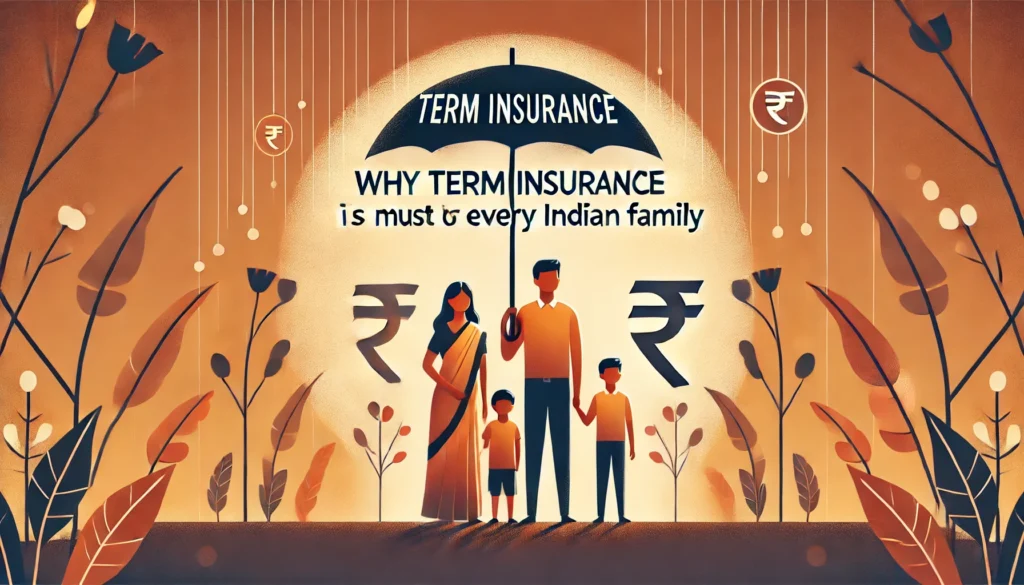Securing your child’s future is a priority for every parent. Learn how to choose the best insurance plan for your child’s future, focusing on education, financial security, and long-term goals.
Every parent dreams of providing the best for their child, especially when it comes to education and financial security. As the cost of education continues to rise and life becomes increasingly unpredictable, choosing the right insurance plan for your child’s future is more crucial than ever. This guide will help you navigate the various options available and select the best insurance plan to ensure your child’s dreams are safeguarded.
Understanding the Importance of Child Insurance Plans
Why Do You Need a Child Insurance Plan?
Child insurance plans are designed to secure your child’s financial future by providing a safety net that covers educational expenses, medical emergencies, and other critical needs. These plans combine the benefits of insurance and investment, ensuring that your child is financially supported, even in your absence.
Key Benefits of Child Insurance Plans
- Financial Security: Provides a lump sum amount or regular payouts to cover your child’s education and other expenses.
- Life Cover: Offers life insurance coverage, ensuring financial protection if something happens to the parent.
- Maturity Benefits: At the end of the policy term, the maturity amount can be used for higher education or other significant expenses.
- Premium Waiver: In case of the policyholder’s demise, many plans offer a waiver on future premiums while continuing to provide the benefits as planned.
Types of Child Insurance Plans
1. Child ULIPs (Unit-Linked Insurance Plans)
Child ULIPs are insurance plans that also serve as an investment. Part of the premium you pay is allocated towards life insurance, while the rest is invested in equity or debt funds, depending on your preference.
- Pros:
- Potential for high returns due to market-linked investments.
- Flexibility in choosing investment options.
- Partial withdrawals are allowed after a certain period, which can be used for educational expenses.
- Cons:
- Returns are subject to market risks.
- Higher charges compared to traditional plans.
2. Traditional Endowment Plans
These plans offer a guaranteed sum assured along with bonuses, if any, at the end of the policy term or on the death of the policyholder.
- Pros:
- Low-risk investment with guaranteed returns.
- Ideal for conservative investors.
- Stable and predictable maturity amount.
- Cons:
- Lower returns compared to market-linked plans.
- Lesser flexibility in investment choices.
3. Money-Back Plans
Money-back plans provide regular payouts at specific intervals during the policy term. These payouts can be timed to coincide with major educational milestones like school or college admissions.
- Pros:
- Regular payouts help manage educational expenses.
- Provides life cover along with financial benefits.
- Fixed, predictable returns.
- Cons:
- Returns might be lower compared to ULIPs.
- Less flexibility in managing the payouts.
Factors to Consider When Choosing a Child Insurance Plan
1. Financial Goals
Before selecting a plan, identify your financial goals. Are you saving for your child’s higher education, marriage, or other significant milestones? Understanding your goals will help you choose a plan that aligns with your needs.
2. Risk Appetite
Assess your risk appetite. If you are comfortable with market-linked risks and looking for potentially higher returns, a ULIP might be suitable. For those who prefer guaranteed returns with low risk, traditional endowment or money-back plans are better options.
3. Premium Affordability
Consider how much premium you can comfortably afford without straining your finances. Remember, child insurance plans are long-term commitments, and it’s crucial to choose a premium that you can consistently pay over the years.
4. Policy Term
The policy term should ideally align with your child’s educational milestones. For instance, if your child is currently 5 years old and you plan to save for their higher education at age 18, choose a policy term that matures when they turn 18.
5. Maturity Benefits
Evaluate the maturity benefits of the plan. Ensure that the maturity amount is sufficient to cover the expected future expenses, such as college tuition fees or other educational costs.
6. Premium Waiver Benefit
Ensure that the plan includes a premium waiver benefit. In the unfortunate event of the policyholder’s demise, this feature waives off future premiums, while the policy continues to provide the promised benefits to the child.
7. Inflation Protection
Consider how the plan accounts for inflation. Education costs increase significantly over time, so ensure that the plan’s returns will be adequate to meet future expenses, not just current costs.
Steps to Select the Right Child Insurance Plan
1. Assess Your Child’s Future Needs
Estimate the future financial needs for your child, considering inflation and rising education costs. This will help you determine the coverage amount required.
2. Compare Different Plans
Don’t settle on the first plan you come across. Compare multiple plans from different insurers, looking at features, benefits, and costs. Online insurance comparison tools can be very helpful in this regard.
3. Understand the Policy Terms
Carefully read the policy document, paying attention to exclusions, premium payment terms, and conditions for payouts. If you’re unsure about any terms, consult with an insurance advisor.
4. Check the Insurer’s Claim Settlement Ratio
A high claim settlement ratio indicates that the insurer is reliable in honoring claims. This is particularly important for child plans, where the future of your child is at stake.
5. Seek Professional Advice
If you’re uncertain about which plan to choose, consider consulting a financial advisor who specializes in child insurance plans. They can provide personalized advice based on your financial situation and goals.
Common Mistakes to Avoid
1. Delaying the Purchase
Procrastination can lead to higher premiums and lower returns. The earlier you start, the more time your investment has to grow, resulting in higher maturity benefits.
2. Underestimating Future Costs
Many parents underestimate the future cost of education. Ensure that your plan accounts for inflation and other potential expenses, providing adequate coverage.
3. Choosing a Plan Based Solely on Premiums
While it’s important to choose a plan within your budget, selecting the cheapest option may not always be the best choice. Focus on the benefits and coverage offered by the plan rather than just the premium.
4. Ignoring Policy Features
Ignoring features like the premium waiver, inflation protection, or the flexibility to switch funds (in ULIPs) can lead to insufficient coverage. Always consider these features when choosing a plan.
FAQs
What is the ideal age to start a child insurance plan?
The best time to start a child insurance plan is as early as possible. Starting early allows you to accumulate a significant corpus by the time your child needs it for education or other milestones.
Can I withdraw money from a child insurance plan before maturity?
Some plans, especially ULIPs, allow partial withdrawals after a certain period. However, it’s important to check the terms of the policy before making any withdrawals to avoid penalties or reduced benefits.
What happens if I miss a premium payment?
Most plans offer a grace period for missed payments. If the premium is not paid within this period, the policy might lapse, and the benefits could be forfeited. It’s crucial to maintain regular premium payments to ensure continued coverage.
Is it possible to increase the coverage amount later?
Some plans allow you to enhance the coverage through top-up options or by adding riders. However, this may depend on the policy terms and the insurer’s conditions.
Are the payouts from a child insurance plan tax-free?
Yes, the payouts from child insurance plans are generally tax-free under Section 10(10D) of the Income Tax Act, provided the premium paid does not exceed 10% of the sum assured.
Conclusion
Choosing the right insurance plan for your child’s future is a significant decision that requires careful consideration. By understanding your financial goals, assessing different types of plans, and considering the various factors mentioned above, you can ensure that your child’s future is secure, no matter what life brings. Start early, plan wisely, and rest assured that you are providing the best possible financial foundation for your child’s future.


